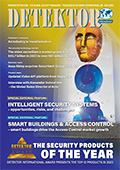16/12/2012
Wavesight provides solution in Amsterdam
Amsterdam, The Netherlands
The requirement set by the Dutch police was to deliver CCTV images over distances of up to 2 km from 30 IP cameras located within the main tourist district, both to the town hall and to the police station in Lijnbaansgracht. By using a combination of Wavesprints and Waveflows, the images from the 30 cameras were collected centrally and then backhauled to two separate locations. This was achieved using two separate backhaul Wavemax systems positioned on hotel rooftops in the main tourist district.
Instead of multi-casting from the edge of the surveillance area (i.e. asking the camera to send multiple images to different receivers), the solution of multi-casting from the network video recorder situated at the council building was favoured. This meant that the source (IP camera) only needed to send the image once, thereby allowing it to be delivered to a large number of receivers, making for a more efficient use of the wireless network infrastructure. Overall, this enabled greater bandwidth and real-time image capture, as well as for the cameras to be controlled remotely from both the police station and the town hall.
The system chosen was based on radio communication with high performance orthogonal frequency division multiplexing (OFDM) radio bridges bringing the total of Wavesight radios deployed in the Netherlands to over 400 – mainly used in critical video surveillance applications.
This offered the customers two key benefits. First, they offered near line of sight (NLOS) capability, which meant that even where clear line of sight (CLOS) was not available, a link could be established and sufficient bandwidth would be made available despite obstructions. This provided greater flexibility and reduced the number of radios required (and the time it took to install them) over alternative solutions.
The second benefit was the range of frequencies available, one of the widest on the market from a single product. In this case it was essential to use frequencies outside the public domain. Wavemax units operating at 5GHz provide a sufficient number of non-overlapping channels to avoid interference with neighbouring channels in a medium-large WLAN environment.
Additional benefits for the end-user are that less manpower is required and the system can be both expanded and re-deployed where necessary. All of this done easily and at little expense for the police authority. It was not possible to use existing leased fibre in this case, because it was dedicated to domestic use and would not have had the capacity to transmit CCTV images at 25 frames per second – not to mention the additional cost to the end-user in leasing charges.
For Q-Cat this has been a very successful project and provides a clear demonstration of the company’s ability to integrate wireless technology and provide the reliability, performance and flexibility its client needed. Hugo van Hees, director at Q-Cat comments: “We partnered with Wavesight as we needed to provide a reliable and robust system for our client. The fact that they had already successfully delivered many urban surveillance projects in the UK and other cities throughout the World re-assured us that they could deliver what was needed”.

















